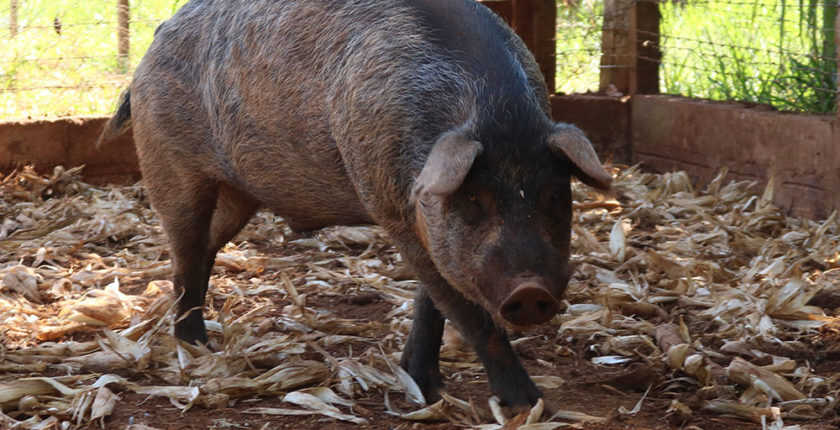
Existem diversas raças de porcos em todo o mundo, cada uma com suas próprias características específicas. Abaixo, estão algumas das principais raças de porcos e suas principais características:
- Porco Landrace: uma raça originária da Dinamarca, o Landrace é conhecido por ter uma carne de alta qualidade e baixo teor de gordura. Ele tem um corpo longo e estreito, com orelhas grandes e caídas.
- Porco Yorkshire: originário da Inglaterra, o Yorkshire é uma raça de porco grande e musculosa, conhecida por sua carne magra e saborosa. Ele tem um corpo longo e reto, com orelhas eretas.
- Porco Hampshire: uma raça americana, o Hampshire é um porco grande e musculoso, conhecido por sua carne marmorizada e saborosa. Ele tem um corpo mais curto e largo, com uma faixa preta na parte superior do corpo e orelhas eretas.
- Porco Berkshire: originário do Reino Unido, o Berkshire é uma raça de porco pequena e compacta, conhecida por sua carne marmorizada e saborosa. Ele tem um corpo curto e largo, com uma pelagem preta brilhante e orelhas caídas.
- Porco Duroc: uma raça americana, o Duroc é um porco grande e musculoso, conhecido por sua carne marmorizada e saborosa. Ele tem um corpo longo e reto, com uma pelagem vermelha e orelhas caídas.
- Porco Ibérico: originário da Península Ibérica, o Ibérico é uma raça de porco valorizada por sua carne saborosa e gordura intramuscular, que é fundamental para a produção do presunto ibérico de bellota. Ele tem um corpo robusto e compacto, com pernas curtas e orelhas caídas.
- Porco Mangalitsa: originário da Hungria, o Mangalitsa é uma raça de porco rara e valorizada, conhecida por sua carne marmorizada e saborosa. Ele tem um corpo grande e peludo, com orelhas caídas.
- Porco pesante: é uma raça de porco de grande porte, com pernas longas e musculosas e uma camada espessa de gordura. Ele é criado em fazendas familiares ou cooperativas locais, seguindo os padrões de bem-estar animal e qualidade que são fundamentais para a produção do presunto de Parma.
- Porco Large White: o Large White é uma raça de porco de origem inglesa, conhecida por sua carne magra e saborosa, além de sua alta produtividade. Eles possuem pelagem branca, orelhas grandes e caídas, e corpo robusto e musculoso. São porcos de médio a grande porte, com peso médio entre 250 e 350 kg. Sua criação é voltada principalmente para a produção de carne, mas também são utilizados na produção de toucinho e banha. O Large White é uma raça muito difundida em todo o mundo, sendo criada em diversos países, inclusive no Brasil, onde é utilizada em sistemas intensivos de produção de suínos.
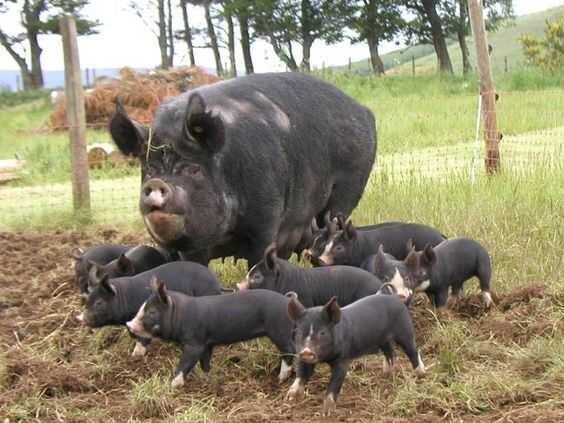
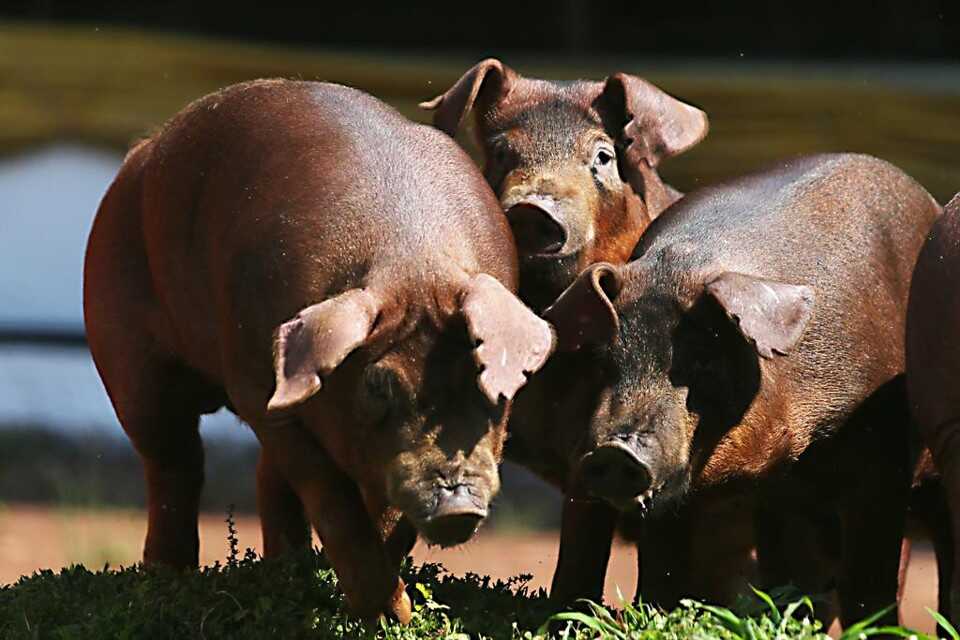
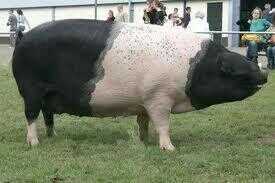
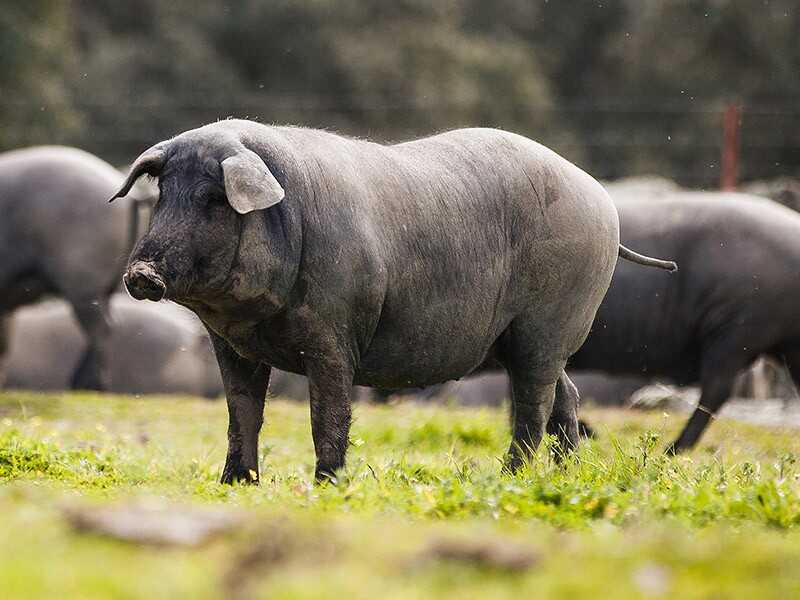
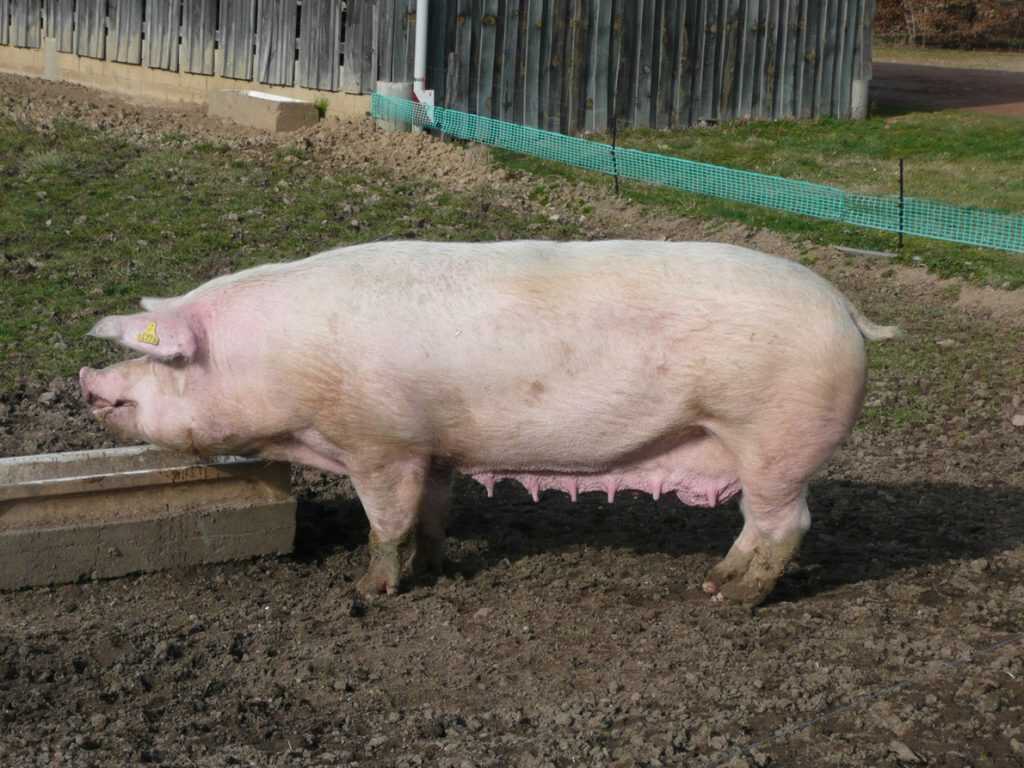
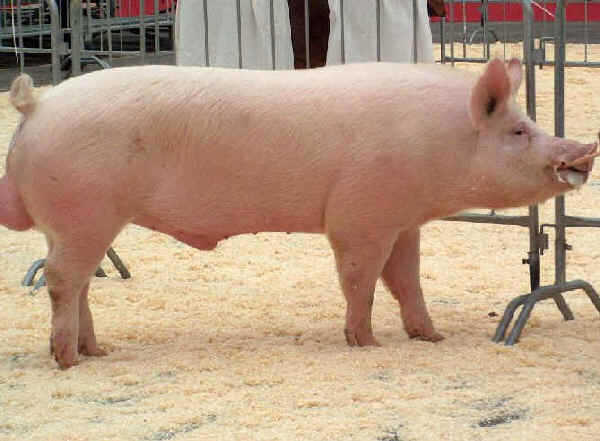

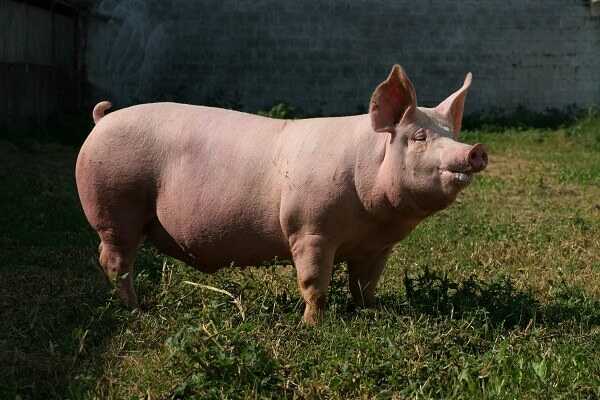
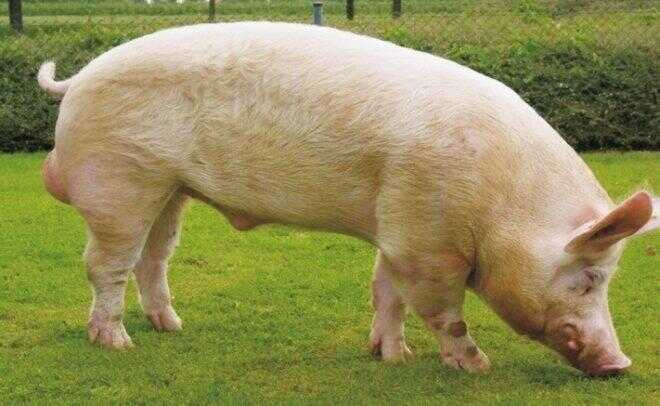
Porcos brasileiros
Existem diversas raças de porcos tipicamente do Brasil, podem ser raças locais, nativas ou misturas de raças trazidas de outras regiões do mundo, algumas delas são:
- Porco Moura: devido à sua adaptação a diferentes condições climáticas e sua resistência a doenças, ele pode ser encontrado em várias regiões do país. O porco Moura é valorizado por sua carne saborosa e suculenta.
- Porco Caipira: o porco caipira é uma raça de porco criada principalmente em áreas rurais de diversas regiões do Brasil, como Sudeste, Sul e Nordeste. Essa raça é criada em sistemas de produção extensivos, alimentando-se principalmente de pasto e outros alimentos naturais, o que confere à carne um sabor característico e diferenciado. Os produtores de porco caipira geralmente são pequenos produtores rurais, que valorizam a produção de alimentos saudáveis e sustentáveis, e buscam atender a demanda por carne de porco de qualidade nos mercados locais e regionais. A criação de porcos caipiras é feita de forma mais natural, sem uso de hormônios ou antibióticos, e os animais têm espaço suficiente para se movimentar e crescer mais lentamente, resultando em carne de melhor qualidade. No entanto, a raça ainda é pouco conhecida fora do mercado regional e enfrenta desafios para sua promoção e conservação.
- Porco Caruncho: o porco Caruncho é uma raça de porco nativa do Nordeste do Brasil, e é criado principalmente nos estados de Pernambuco, Paraíba e Alagoas. Ele é valorizado por sua carne saborosa e pela alta concentração de gordura, o que o torna ideal para a produção de banha. O porco Caruncho é uma raça criada principalmente em sistemas de produção extensivos, em que os animais são alimentados com pasto e outros alimentos naturais, o que confere à carne um sabor característico e diferenciado. No entanto, devido à sua baixa produtividade em comparação com outras raças comerciais, o porco Caruncho enfrenta desafios para sua conservação e preservação.
- Porco Crioulo: o porco crioulo, também conhecido como porco criollo, é criado principalmente em áreas rurais do Sul do Brasil, nos estados do Rio Grande do Sul, Santa Catarina e Paraná. Essa raça é criada em sistemas de produção extensivos, alimentando-se principalmente de pasto e outros alimentos naturais, o que confere à carne um sabor característico e diferenciado. Os produtores de porco crioulo geralmente são pequenos produtores rurais, que valorizam a produção de alimentos saudáveis e sustentáveis, e buscam atender a demanda por carne de porco de qualidade nos mercados locais e regionais. A criação de porcos crioulos é feita de forma mais natural, sem uso de hormônios ou antibióticos, e os animais têm espaço suficiente para se movimentar e crescer mais lentamente, resultando em carne de melhor qualidade. No entanto, a raça ainda é pouco conhecida fora do mercado regional e enfrenta desafios para sua promoção e conservação.
- Porco Piau: A raça Piau é considerada uma das melhores e mais importantes raças naturalizadas nacionais. Há indícios de que está raça originou-se na região central do Brasil, que inclui Goiás, Minas Gerais e São Paulo. Piau vem do tupi que significa “o que tem manchas”, devido a raça ser malhada/pintada. É uma raça que tem grande importância econômica e alimentícia para os pequenos produtores rurais. A seleção do porco Piau foi iniciada na Fazenda Experimental de São Carlos, SP em 1939. Outros estudos com esta raça também vêm sendo desenvolvidos desde 1998 na Universidade Federal de Viçosa (MG), onde são cruzados com raças comerciais visando produção e avaliação de linhagens segregantes. Estão sendo desenvolvidos desde 2014 pesquisas e projetos de extensão com a raça Piau na unidade de pesquisas da UFMG em parceria com a cooperativa de pequenos agricultores regionais visando o resgate e difusão da raça no norte de Minas Gerais.
- Porco do Cerrado: animal com excelentes características de carcaça e rendimentos de cortes com marmóreo e coloração avermelhada forte. As peças são utilizadas para produção de embutidos (ex. salame italiano, capocollo, lonzino, lomo serrano, carne na lata) e peças curadas (ex. Jamón Serrano e Prosciutto Crudo). Este cruzamento agrega ainda a rusticidade da raça Piau e os rendimentos e qualidade de carcaça do Duroc.
- Porco Monteiro: o porco Monteiro é uma raça de porco nativa do Nordeste do Brasil, e é criado principalmente nos estados de Pernambuco, Paraíba e Alagoas. Ele é valorizado por sua carne saborosa e pela alta concentração de gordura, o que o torna ideal para a produção de banha. O porco Monteiro é uma raça criada principalmente em sistemas de produção extensivos, em que os animais são alimentados com pasto e outros alimentos naturais, o que confere à carne um sabor característico e diferenciado. No entanto, devido à sua baixa produtividade em comparação com outras raças comerciais, o porco Monteiro enfrenta desafios para sua conservação e preservação.



Cada raça de porco tem suas próprias características únicas e pode ser melhor adaptada para diferentes condições de criação e finalidades de produção. A escolha da raça de porco para a produção de carne depende das necessidades do produtor, das condições de criação e do mercado consumidor.




Porco Caipira, assim como Porco Criolo, não são raças. Porco Caipira se refere ao sistema de criação, rústico, tradicional, normalmente para subsistência e com mistura desordenada de raças ou seja, animais sem raça definida. Sistema diferente do sistema industrial, que é intensivo confinado com raças e linhagens estrangeiras “melhoradas” geneticamente para alto ganho de peso e pouca gordura. Raça Crioula é um termo geral, para se referir às raças brasileiras antigas, desxendentes dos porcos trazidos no inicio da colonização das Américas formadas antes da revolução industrial (ou em espanhol “criollas, para os outros países latinoamericanos). Para saber mais disso podem consultar por exemplo a aula sobte esse assunto no canal Prosa Caipira https://youtu.be/k60N8p34u4Q?si=ywRVfhpv994fejhG
Porco “pesanti”, para presunto Parma e San Danielli, significa “pesado”, não se refere a raça, mas ao peso de abate. Na Itália (tambem na Espanha) pela norma vigente, porcos pesados (de engorda) são aqueles abatidos acima de 160 kg. No Brasil, por norma do Ministério da Agricultura, são considerados porcos pesados os de engorda abatidos acima de 130 kg. Para saber mais sobre o assunto podem consultar a Dissertação de Mestrado, sob minha orientação, do Dr. Alexandre Oliveira na UFPR: https://docs.ufpr.br/~marson/Doctos/Oliveira_2011_DMSc_qualidade_carne_carcaca_suinos.pdf
Excelente artigo